
Students will explore the lifecycles and traits of apples and pumpkins.
- Subject:
- Agriculture Studies
- Material Type:
- Activity/Lab
- Lesson
- Provider:
- Iowa Agriculture Literacy Foundation
- Author:
- Whittney Nordmeyer
- Date Added:
- 10/11/2018

Students will explore the lifecycles and traits of apples and pumpkins.

This short video and interactive assessment activity is designed to teach fourth graders about calculating distance in meters.

This short video and interactive assessment activity is designed to teach fourth graders about time and rate problems.

This short video and interactive assessment activity is designed to teach fourth graders about determining task length.

This final lesson in the unit culminates with the Go Public phase of the legacy cycle. In the associated activities, students use linear models to depict Hooke's law as well as Ohm's law. To conclude the lesson, students apply they have learned throughout the unit to answer the grand challenge question in a writing assignment.
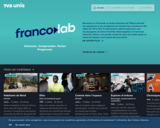
"Bienvenue sur Francolab, la section éducative de TV5Unis destinée aux apprenants et aux enseignants de français! Vous trouverez ici des vidéos de TV5 et Unis TV spécialement sélectionnées pour vous, accompagnées de fiches d’activités téléchargeables et d’exercices interactifs. Grâce à une grande variété de sujets de société, parler en classe de français n’aura jamais été aussi facile!"
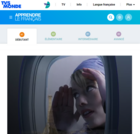
Ce site vous offre plusieurs activités où vous pouvez apprendre et pratiquer votre français.
On y trouve les 4 niveaux suivants:
débutant
élémentaire
intermédiaire
avancé

The very basics of French, as though you have just arrived in a French-speaking country. Instructions are in English.
Topics include:
-Greetings
-Hobbies
-Accommodation
-Meals
-Work
-Health
-Trips
Apprendre le français has many more units and lesson sequences, aligned with the Common European Framework of Reference for Languages, but the language of instruction is more often in French: https://apprendre.tv5monde.com/en
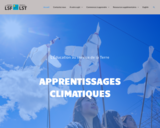
Cette ressource a été conçue pour remédier aux lacunes en matière de connaissances et aux demandes de soutien qui sont ressorties de notre sondage national : Canada, changement climatique et éducation : Possibilités en matière du système d’éducation formel et de l’éducation du public.
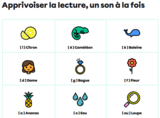
Vous souvenez-vous du moment où vous avez commencé à lire? Des petits mots par-ci, des petits sons par-là. Il faut bien commencer quelque part! Avec cette activité, nous vous suggérons justement de commencer par repérer les sons au sein des mots.
Il existe plusieurs façons d’effectuer l’exercice avec vos élèves. Voici quelques exemples :
Repérer un son dans un des mots écrits sur les cartes.
Pointer les cartes qui contiennent un son particulier.
Classer les cartes en ordre alphabétique.
etc.
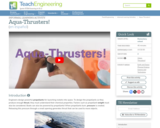
Students build rocket-powered model boats using film canisters.

This short video and interactive assessment activity is designed to teach third graders about creating largest and smallest numbers given digits.

Students are introduced to Pascal's law, Archimedes' principle and Bernoulli's principle. Fundamental definitions, equations, practice problems and engineering applications are supplied. A PowerPoint® presentation, practice problems and grading rubric are provided.

Students explore the interface between architecture and engineering. In the associated hands-on activity, students act as both architects and engineers by designing and building a small parking garage.

Architectural and Structural Physical Science provides learning opportunities for students interested in preparing for careers in such areas as architecture, industrial design, and civil Physical Science.

Students will examine the use of the elements of art, including line, shape, form, texture, and color, in a drawing. They will also study the elements of architecture and learn to identify architectural elements in detail and their relationship to the surrounding landscape. Then students will draw an ancient Roman temple in perspective, integrating architectural elements in the drawing.
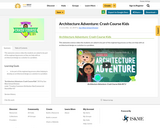
This awesome science video the students are asked to be part of the engineering process as they are help with an architectural design as a solution to a problem.

Originally conceived of as a curriculum resource for Nunavut schools, this comprehensive interactive presentation provides an excellent introduction to the arctic, and to the people who made this environment their home for the past thousands of years.
The presentation begins by introducing the arctic environment. An interactive migration activity concludes this first section, encouraging the student to consider the challenges of a family at the turn of a season as they decide where to travel next to find the sustenance on which their lives depend. The next section introduces the arctic peoples, their tools, shelters, and their modes of transportation.
The third section introduces the science of archaeology along with the regulatory environment for accessing archaeology sites in Nunavut today. The final section focuses on a rich archaeological site in the High Arctic. This section is also interactive, requiring the student’s assistance to identify objects and make decisions about the Tuniit and the Thule who were known to have occupied this site.

Students learn that dams do not last forever. Similar to other human-made structures, such as roads and bridges, dams require regular maintenance and have a finite lifespan. Many dams built during the 1930-70s, an era of intensive dam construction, have an expected life of 50-100 years. Due to inadequate maintenance and/or for environmental reasons, some of these dams will fail or be removed in the next 50 years. The engineers with Splash Engineering have an ethical obligation to remind Thirsty County of the maintenance and lifespan concerns associated with its dam.

This lesson explores the similarities between how a human being moves/walks and how a robot moves. This allows students to see the human body as a system, i.e., from the perspective of an engineer. It shows how movement results from (i) decision making, i.e., deciding to walk and move, and (ii) implementing the decision by conveying the decision to the muscle (human) or motor (robot).